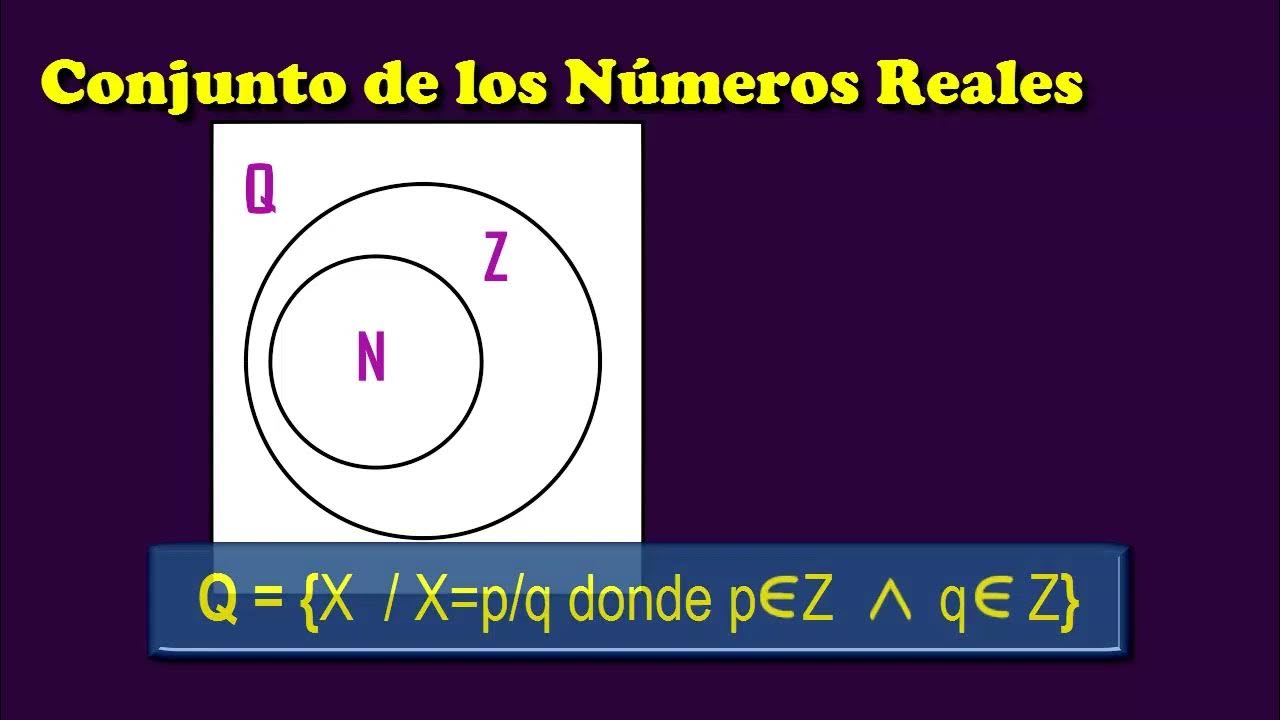NÚMEROS RACIONALES Super facil - Para principiantes
Summary
TLDRIn this educational video, Daniel Carrión introduces the concept of rational numbers, which can be expressed as fractions. He explains the hierarchy starting from natural numbers, moving to integers, and finally rational numbers. Carrión uses examples like 2, -8, 0.75, and 0.888... to illustrate rational numbers. He also differentiates between exact decimals, pure recurring decimals, and mixed recurring decimals, all of which are rational. The video ends with exercises for viewers to practice and encourages engagement through likes and subscriptions.
Takeaways
- 📚 Daniel Carrión introduces the topic of rational numbers.
- 🔢 Rational numbers are those that can be expressed as a division or fraction, written as a/b where a and b are integers and b ≠ 0.
- 🌐 The script provides a visual representation of rational numbers using the symbol 'Q'.
- 🔄 It discusses the hierarchy of numbers, starting with natural numbers (N), then integers (Z), and finally rational numbers (Q).
- 🔢 Natural numbers are used for counting and are represented by the symbol 'N'.
- 🔄 Integers include natural numbers and their negatives, represented by the symbol 'Z'.
- 📈 Rational numbers include integers and can be represented in various ways, such as 2/1, 4/2, or 84/42.
- 🔹 The script differentiates between exact decimals (finite number of decimal places) and repeating decimals (infinite repeating sequence).
- 🔄 Examples of rational numbers include 0.5 (1/2), 3.25 (13/4), -0.75 (-3/4), and repeating decimals like 0.888... (8/9).
- 📝 Daniel encourages viewers to practice identifying rational numbers and solving exercises.
- 👍 The video concludes with a call to action for likes, comments, shares, and subscriptions.
Q & A
What is the main topic discussed in the video script?
-The main topic discussed in the video script is rational numbers.
How are rational numbers defined in the script?
-Rational numbers are defined as numbers that can be represented as a division or a fraction, in the form of a over b, where a and b are integers and b is not equal to zero.
What symbol is used to represent rational numbers in the script?
-The symbol used to represent rational numbers in the script is the letter 'q'.
What is the difference between natural numbers and integers according to the script?
-Natural numbers are used for counting and are represented by the symbol 'n', while integers include all natural numbers and their opposites, represented by the symbol 'z'.
Can you provide an example of how the number 2 is represented as a rational number?
-The number 2 can be represented as a rational number in various ways, such as 2/1, 4/2, or 8/4.
What are the different types of rational numbers mentioned in the script?
-The script mentions integers, exact decimals, pure periodic decimals, and mixed periodic decimals as different types of rational numbers.
How is the number -0.75 represented as a rational number?
-The number -0.75 is represented as a rational number as -34/100 or -3/4.
What is a pure periodic decimal according to the script?
-A pure periodic decimal is one in which all its decimal places repeat infinitely, such as 0.888... which is equal to 8/9.
Can you explain what a mixed periodic decimal is using an example from the script?
-A mixed periodic decimal is one where there is a non-repeating decimal part before the repeating period. For example, 0.8333... where the '3' repeats infinitely is equal to 5/6.
What is the purpose of the exercises mentioned at the end of the script?
-The purpose of the exercises is to allow viewers to practice and solidify their understanding of rational numbers.
How can viewers engage with the content after watching the video?
-Viewers can engage with the content by liking the video, commenting their responses to the exercises, sharing the video, and subscribing for more content.
Outlines

このセクションは有料ユーザー限定です。 アクセスするには、アップグレードをお願いします。
今すぐアップグレードMindmap

このセクションは有料ユーザー限定です。 アクセスするには、アップグレードをお願いします。
今すぐアップグレードKeywords

このセクションは有料ユーザー限定です。 アクセスするには、アップグレードをお願いします。
今すぐアップグレードHighlights

このセクションは有料ユーザー限定です。 アクセスするには、アップグレードをお願いします。
今すぐアップグレードTranscripts

このセクションは有料ユーザー限定です。 アクセスするには、アップグレードをお願いします。
今すぐアップグレード5.0 / 5 (0 votes)






